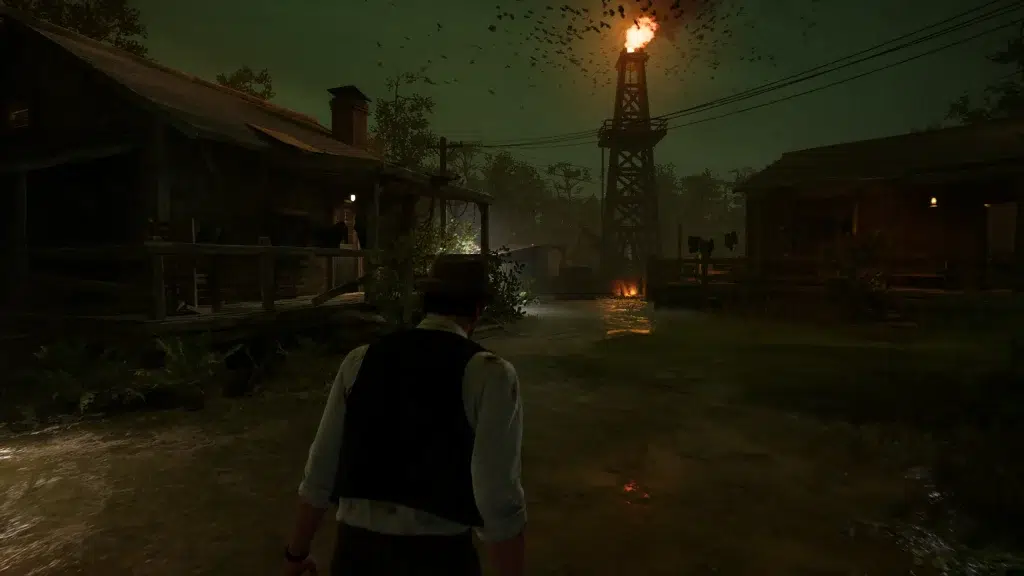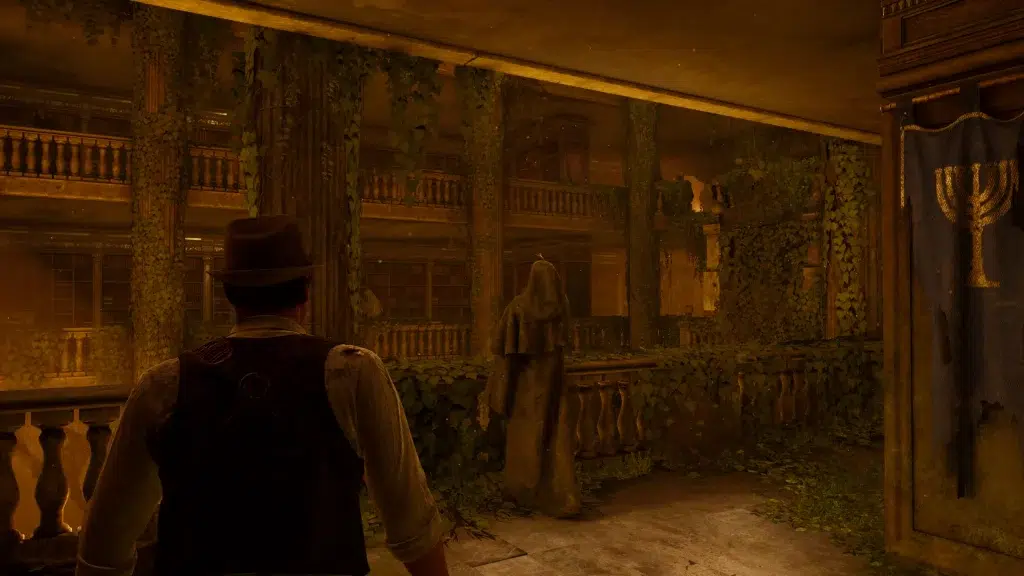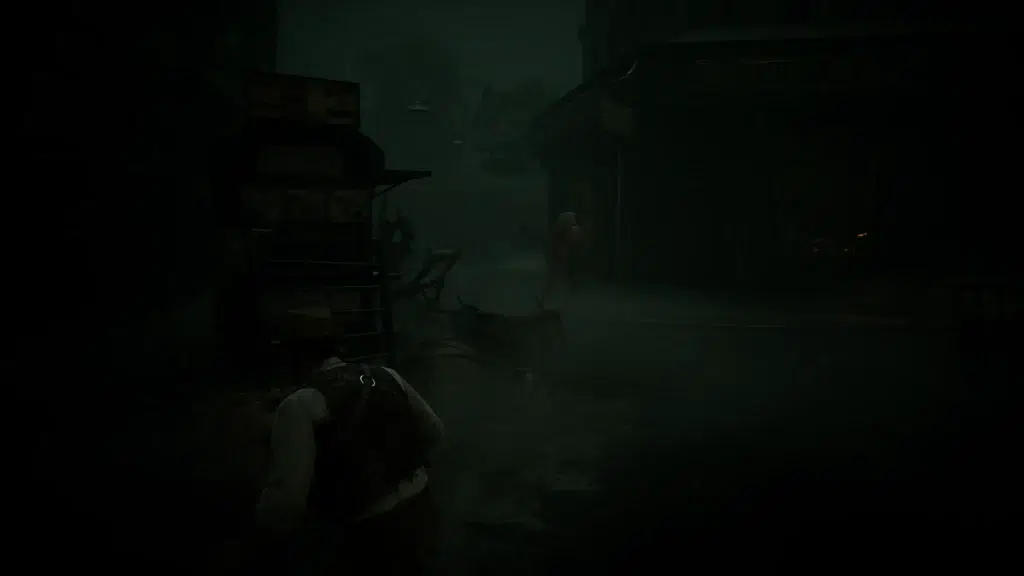
Some of the best horror games we've been treated to in recent years have been remakes of classic titles, with no shortage of new offerings like the eclectic Alan Wake 2. This is where it would be useful to make a distinction. On the one hand we have titles that stay true to the original games and keep the original experience more or less intact by modernising it. Examples of this category include Dead Space and System Shock. On the other hand, we have titles that have undergone significant changes, whether it be to the storyline, characters, gameplay, map designs, or a combination of the above. In this category (which we would more appropriately refer to as reimagining) we have the modern Resident Evil games. Alone in the Dark falls into the latter case. The not particularly well-known Pieces Interactive (Magicka 2, Titan Quest expansions minus Eternal Embers) with the support of THQ Nordic, took on this seemingly difficult task of reworking the original 1992 game and making it feel fresh. And they succeeded, for better or for worse...
It is good to clarify something from the get-go: If you were expecting to play a modern horror game with lots of action, weapon upgrades, trading or {insert here any element that checks some list of the average AAA game in 2024}, you'd better look elsewhere. After all, according to the vision of the series creator Frédérick Raynal, Alone in the Dark was meant to be a "mystery game with paranormal elements". Something that was evident from the completely stitched with fishing line and blessings, combat, which was thrown in as a means to intersperse the gameplay. Which focused mostly on the old-school adventure puzzle solving and mansion exploration. And I can assure you that in some aspects, such as the aforementioned dealing with enemies, the game hasn't aged well, however it would be surprising if this were otherwise, as we're talking about a 32 year old creation.

However, time and advances in videogames have not been kind to the series in general. The first game is a historical relic (and interesting material for retrospectives), set in a pulpit of worship that paved the way for its many successors (Resident Evil, Silent Hill, etc.) and established the Survival Horror genre as we know it. The successive games, while noteworthy, did not evolve the formula of the original, in fact Alone in the Dark 2 made more noticeable some of the weaknesses of its predecessor. From there, with the exception of the fairly underrated for the wrong reasons The New Nightmare (old-timers concluded that it was very similar to the Resident Evil games of its era), each new episode was woefully disappointing and plunged the series deeper and deeper into oblivion. After this lengthy but necessary introduction, let's see if the new AitD does any better.
The story is hardly reminiscent of the Infogrames game. The main characters are present again, but not in the same roles we remember them in. Edward Carnby and Emily Hartwood are here, as is the latter's uncle, Jeremy Hartwood. Emily hires Edward after receiving a rather disturbing letter from Jeremy - in which he writes, among other things, that his life is in danger - in order to seek him out. Their destination is Derceto Mansion, which looms imposing and mysterious in the Louisiana bayous. Only this time, whichever character we choose, we won't be so... alone in the dark. Or more accurately, alone in the mansion, as there are clearly more dark environments than the original. In this new adventure, the mansion has been turned into a makeshift asylum for the mentally unstable, so during our time wandering through it, we'll meet the staff working there, as well as the secretive patients. Soon our protagonists will find that things are not as they seem and something malicious is behind Jeremy's disappearance.

The story progresses at a relatively slow pace for the most part, though the way this is achieved keeps things interesting until the finale, one of the most unexpected I've seen in recent years. We feel that there has been an attempt to make the game more cinematic, with more dialogue and a modern narrative approach. It makes perfect sense, because the script this time around is more complex than "they were in the wrong place at the wrong time". That's not to say that there aren't files we find that unfold the story in a classic, traditional way, and it's commendable that every piece of information we read can be accompanied by voice-overs (from the person who wrote the letter, diary, etc.), which are very solid. To enjoy the game, it's not necessary to have played the original trilogy, but several easter eggs as well as a few scenes that have remained intact - mostly from the first AitD - will bring a smile of nostalgia to your face.
Apart from a few surprises, the game does not generally deviate from the following structure: exploration to gather clues and solve puzzles within the mansion, interspersed with some detached areas that look like the figments of some fragile mind (adequately justified by the scenario), and then back to the mansion, and so on and so forth. Without lacking the occasional puzzles there too, these set pieces more prominently feature the various abberations we will encounter, of a limited variety unfortunately (some are encountered more often than others, thus intensifying the sense of repetition). The puzzles on the other hand, clearly have more variety, but the vast majority of them are easy and the solution is usually somewhere nearby. It's a shame that the level of challenge isn't higher, such as in Song of Horror, an excellent showcase of the legacy of the classic AitD games.

The gameplay during combat is not one of the strong aspects of this title. The animation in the character's evasive maneuver, the way the creatures and especially the protagonist react when hit, the stealth that didn't go beyond a basic concept, etc. contribute to an action that... it just works. Depending on where you're coming from, these can also be seen as part of the charm that comes with horror game that has is roots in bygone eras. Personally they didn't bother me, but after the Resident Evils of the last 5 years, I certainly expected more. The game is quite generous with the ammunition it provides, and at frequent intervals we find a melee weapon that reminds us the lack of polish in close combat as well. The limited supplies we can carry with us, however, don't allow us to feel particularly powerful. There's no inventory in the traditional sense, just an interface that shows us the weapons, ammo and flasks of - what else - health replenishing brandy. Assistance is also provided in the form of throwable objects, so-called Opportunities, such as bricks and bottles of flammable liquid that we can hurl at opponents to stun or torch them respectively.


The way AitD is structured, means that the level design fluctuates in quality. Inside Derceto it's excellent, with access to the various rooms given, as usual, gradually to the player, while exploration is rewarded with clues to puzzles, as well as collectibles that, when complete specific sets, unlock the lore of AitD. In the areas we move away from the mansion, the design of each map is linear and frankly unimpressive, with few places branching off or offering opportunities to discover something interesting. Presumably this choice was made to provide a sense of urgency.
The atmosphere of AitD smells of peat, wallpaper and mouldy wood, in an eerie, dark setting. Think of a mix of pagan, Lovecraftian literature with a 1930s aesthetic and you'll get a good idea of what to expect. The difference between HDR active and not is the biggest I've encountered in a game so far, so I'd definitely advise turning it on as the stark contrasts and warm colours are a big part of the title's atmosphere. This one uses the Unreal Engine 4 and while it doesn't quite come close to the best this engine has offered so far, it does render the environments and characters adequately. We have some uneven results in them, as predictably Emily and Edward have been given more attention due to the motion capture of Jodie Comer and David Harbour respectively, while the rest are in the category of typical game npcs. The performances on the other hand, are on a good level and the script is delivered convincingly. The calm moments are complemented in an excellent way by the melancholic and ominous doom jazz brass instruments, composing a fantastic soundtrack, rather unique for this genre.

Derceto's curse seems to have passed into the game's code, as well. Occasional drops in framerate when entering a new area (UE is notorious for the shadow compiling process in such cases), interaction points that sometimes disappear from the environment afte loading an auto-save, character being stuck in the environment (it happened in narrow places where there were logs, elevated ground, etc.) and the most annoying bug - in that it was not remedied by loading - which did not recognize custom keybinding for certain actions, are the major issues that remain after applying the day 1 patch. Apart from the above, the implementation of Opportunities could be better. They literally exist in such large numbers that we don't need them, even in places where there are no enemies. However, once we take one with us we have to move excruciatingly slow, and if we release the button holding it, we toss the item. How hard would it be to be able to carry a brick and a Molotov cocktail and equip them when we want to?

Alone in the Dark has been dormant for a long time, forgotten by everyone and with an impact that younger generations of gamers don't realize how far it has reached. It skews towards the side of modern Resident Evils, but it expectedly fails to be on the same level of quality. Perhaps the developers' ultimate goal was simply to make the original more welcoming to modern audiences. 2024's Alone in the Dark is not the triumphant return we've been waiting for the legendary series. But it's a notable addition to it, one that if anything makes its name sound like more than just a distant echo again. With a satisfying 9-hour campaign and good replayability with 2 characters with different perspectives on the story (plus some other differences I won't spoil), it's a good offering in the genre.
























RATING - 77%
77%
With a thousand young and a handful of grievances
The history behind Alone in the Dark is reminiscent of a case of a teacher who was surpassed by his students. Even so, the latest addition to the classic series may no longer lead the way, but it brings it back to the forefront in a way that honors - after several years - its iconic status.





